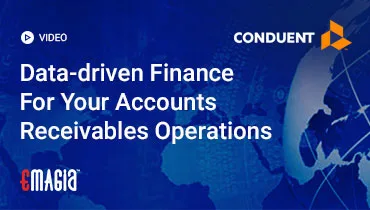The world of business finance can feel like a high-stakes game of chess, and your most powerful piece is cash. Without a solid strategy for managing it, even a profitable business can face a cash crunch. This is why a modern cash management system is no longer a luxury—it’s a fundamental necessity for survival and growth. This comprehensive guide will equip you with the knowledge to not just track, but truly master your cash flow, giving you an undeniable advantage over your competitors. We’ll explore everything from the foundational principles to the most advanced technological solutions, ensuring you have the tools and insights to thrive.
Understanding the Core
What is a Cash Management System?
A cash management system is more than just a ledger; it’s a strategic framework and a set of tools designed to optimize a company’s cash flow. It encompasses the processes, policies, and technologies used to collect, disburse, and manage cash efficiently. The primary goal is to ensure a business has sufficient liquidity to cover its operational expenses, meet its financial obligations, and strategically invest any surplus cash. Think of it as the central nervous system of your business’s financial health, providing real-time visibility into every dollar.
The Evolution of Cash Management: From Ledgers to Automation
For decades, cash management was a manual, painstaking process. Businesses relied on physical ledgers, spreadsheets, and bank visits. This traditional approach was prone to human error, slow, and provided only a fragmented view of financial health. The digital revolution, however, has transformed this landscape. Modern cash management solutions are powered by software and integrated platforms that automate processes, provide real-time data, and offer deep analytical insights. This shift from manual to automated cash management is the single most significant development in modern corporate finance.
The Purpose and Importance of Cash Management
- Ensuring Business Continuity: The most basic yet critical purpose of a cash management process is to ensure that a business can meet its daily operational needs and obligations without facing a liquidity crisis.
- Maximizing Returns: An effective cash management system helps identify idle cash. Instead of letting these funds sit in a low-yield account, the system enables businesses to strategically invest surplus funds to generate additional revenue.
- Minimizing Costs: By optimizing the timing of payments and reducing the need for short-term borrowing, a solid cash management system helps a business avoid expensive fees and interest charges.
- Enhanced Decision-Making: Real-time data and accurate forecasting provide a clear picture of a company’s financial position, empowering leaders to make informed, data-driven decisions about everything from expansion plans to capital expenditures.
Deep Dive into the Cash Management Process
The Cash Flow Cycle: Understanding the Flow of Money
The cash management process is intrinsically linked to the cash flow cycle. This cycle represents the time it takes for a business to convert its resources into cash. It’s composed of three critical stages:
- Collection (Accounts Receivable): This is about getting cash in the door. The process includes invoicing, receiving payments, and ensuring timely collections from customers.
- Disbursement (Accounts Payable): This involves managing the outflow of cash, including paying suppliers, employees (payroll), rent, and other operational expenses.
- Liquidity & Optimization: This final stage involves managing the cash you have on hand, ensuring you have the right amount in the right accounts to meet obligations while investing any surplus for optimal returns.
The Key Components of a Robust System
A successful system integrates several core components to provide a holistic view of your finances.
- Cash Flow Monitoring: Constant, real-time tracking of all cash inflows and outflows across all accounts and locations.
- Cash Flow Forecasting: The ability to predict future cash positions based on historical data and projected business activities. This is a critical element for proactive financial planning.
- Receivables and Payables Management: Streamlining the invoicing, collection, and payment processes to accelerate cash inflow and optimize outflow.
- Working Capital Management: A strategic approach to managing current assets and liabilities to ensure a healthy balance.
- Risk Mitigation and Fraud Prevention: Implementing internal controls and technology to protect the business from theft, fraud, and financial discrepancies.
Types of Cash Management Systems and Services
The needs of a small business are vastly different from those of a multinational corporation. The market offers a wide range of solutions to meet these diverse needs.
Cash Management Services in Banking
Banks have long been the traditional providers of cash management services in banking. These services are designed to help businesses, particularly larger corporations, manage their day-to-day cash transactions and liquidity.
- Bank Sweep Accounts: These accounts automatically transfer excess funds from a checking account into a higher-interest-earning account at the end of each day.
- Lockbox Services: A bank-operated mailing address where customers send their payments directly, which the bank then processes and deposits, accelerating the collection process.
- Automated Clearing House (ACH) Services: Facilitating electronic payments for things like payroll and vendor payments, which are faster and more secure than paper checks.
Corporate Cash Management Solutions
Corporate cash management solutions are tailored for large enterprises with complex financial structures.
- Treasury Management Systems (TMS): Comprehensive, enterprise-level systems that handle all aspects of cash, debt, and investment management on a global scale.
- Automated Cash Flow Management: Software that automates financial workflows, from invoice generation to reconciliation, reducing manual effort and errors.
- Centralized Cash Operations: Centralizing all cash-related activities into a single hub to gain complete visibility and control over global cash positions.
Cash Management System Software
The market for dedicated cash management system software is booming, offering a wide array of specialized tools.
- SaaS (Software as a Service) Solutions: Cloud-based platforms that are easily accessible, scalable, and offer a suite of features from forecasting to reporting.
- Automated Cash Management Systems: These systems leverage technology to automate repetitive tasks, such as reconciliation and data entry, freeing up finance teams for more strategic work.
- Cash and Liquidity Management Software: Specialized software focused on providing real-time liquidity visibility and optimizing cash positions across multiple bank accounts and currencies.
Strategic Cash Management for Business Growth
Effective cash management is not just about survival; it’s a proactive strategy for growth.
Best Practices for Business Cash Management
- Create and Adhere to a Budget: A detailed budget is the roadmap for your cash. Consistently monitoring your actual cash flow against your budget allows you to spot issues and make timely corrections.
- Optimize the Cash Supply Chain Management: From procurement to sales, every step of your supply chain impacts your cash flow. Implement strategies to shorten your cash conversion cycle.
- Manage Accounts Receivable (AR) Strategically: Invoice promptly, follow up on late payments, and offer incentives for early payments. Your cash management process starts with your sales.
- Control Accounts Payable (AP): Take advantage of payment terms and negotiate with vendors to optimize when you disburse cash.
- Leverage Technology: The right cash management tools can automate manual tasks, provide real-time data, and offer deep insights that are impossible to obtain with spreadsheets.
The Role of Technology and Automation
- Real-Time Visibility: Modern software provides a live dashboard of your company’s cash position, eliminating the “visibility gap” of traditional methods.
- Predictive Analytics: Advanced solutions use AI and machine learning to forecast future cash flows with a high degree of accuracy. This automated cash flow management is a game-changer for strategic planning.
- Enhanced Security: Automated systems with features like multi-factor authentication and robust encryption protect sensitive financial data from fraud and unauthorized access.
Cash Management in Banking and Financial Institutions
How Banks Use Cash Management Systems
Banks themselves are heavily reliant on sophisticated cash management systems to manage their own cash reserves, optimize liquidity, and maintain regulatory compliance. These systems are essential for:
- Cash Allocation: Distributing cash optimally across bank branches and ATMs to meet customer demand.
- Liquidity Management: Ensuring the bank has enough cash on hand to cover withdrawals and meet financial obligations.
- Customer Satisfaction: Providing seamless access to cash and reliable services to business clients.
Cash Management Solutions for Banks and Their Clients
Banks offer an array of specialized cash management solutions for banks and their business clients. These services often include:
- Sweeping: Automatically transferring surplus funds to investment accounts.
- Centralized Reporting: A single platform for businesses to view all their account information from multiple banks.
- Risk Management: Tools to help businesses identify and mitigate risks associated with cash handling and transactions.
Oriental Bank Cash Management: A Case Study
(Detailed section about Oriental Bank’s specific cash management offerings, including features like online portals, payroll services, and trade finance, to provide a concrete example of a bank’s cash management solutions.)
Advanced Strategies and Future Trends
Corporate Cash Management: Beyond the Basics
Corporate cash management involves more than just balancing the books. It requires a strategic approach that integrates with the broader financial goals of the organization.
- Cash Concentration: The process of moving cash from multiple subsidiary accounts into a single centralized account. This allows for better visibility and a more efficient use of funds.
- Cash Pooling: A technique used by multinational corporations to manage cash in different currencies and jurisdictions. It involves notionally pooling balances to optimize interest earnings and minimize interest expenses.
- Global Cash Management: Managing cash flows across different countries with varying regulations, tax laws, and banking systems.
The Rise of AI and Automation
The future of cash management is undoubtedly digital. The next generation of solutions will be powered by AI and machine learning, enabling:
- Predictive Analytics: Forecasting cash flow with even greater accuracy by analyzing internal data and external market factors.
- Autonomous Workflows: Fully automating repetitive tasks like reconciliation, data entry, and even payment approvals.
- Fraud Detection: AI algorithms can analyze transaction patterns in real-time to detect and flag fraudulent activity with unprecedented speed.
The Human Element: The Role of the Finance Team
While technology is automating many tasks, the human element remains critical. The finance team’s role is evolving from manual data entry and reconciliation to strategic analysis and planning. They become architects of the financial strategy, leveraging cash management tools to make high-level decisions.
Emagia’s Role in Revolutionizing Cash Management
In the complex world of modern finance, having a partner with the right technology is essential. Emagia provides a suite of cutting-edge solutions designed to transform your financial operations from a reactive, manual process into a proactive, autonomous system. Their platform goes beyond basic transaction tracking, offering a holistic approach that integrates automation, analytics, and AI to deliver unprecedented efficiency and insight.
Emagia’s offerings focus on the entire order-to-cash process, from credit management to payment application. With AI-powered cash application, they can achieve high match rates for incoming payments, drastically reducing the time and effort your team spends on manual reconciliation. Their robust platform is designed for seamless integration with multiple ERPs and over 170 global banks, providing a single, consolidated view of your financial data. By leveraging a digital finance assistant and generative AI, Emagia helps businesses automate complex workflows, improve cash flow forecasting, and make smarter, data-driven decisions. They enable companies to unlock cash that would otherwise be tied up in manual processes, enhancing liquidity and empowering growth.
FAQs about Cash Management
What is cash management?
Cash management is the process of monitoring, controlling, and optimizing a company’s cash flow to ensure it has sufficient liquidity to cover its operational expenses, meet financial obligations, and capitalize on growth opportunities.
What are the types of cash management services?
Types of cash management services include liquidity management, accounts payable and receivable management, cash flow forecasting, treasury management, and various banking services like sweep accounts and lockboxes.
What is the importance of cash management?
Effective cash management is important because it improves financial stability, enhances decision-making, minimizes costs, and positions a business to seize opportunities for growth.
What is an automated cash management system?
An automated cash management system is a software solution that automates key financial processes like data aggregation, reconciliation, and forecasting, reducing manual effort and providing real-time visibility into cash positions.
What is cash supply chain management?
Cash supply chain management refers to the strategic management of the flow of cash throughout a business’s operational cycle, from the time raw materials are purchased until the final product is sold and the cash is collected.



